1RegretBeetle
JRPG Miscellany - Dynamic Party Membership

This is the first part in a series of posts I wanted to make discussing miscellaneous aspects of JRPGs that I think are cool and warrant pointing out, but rarely rise to a level of importance for online discourse in and of themselves.
The topic for the present post concerns the dynamics of JRPG party composition.
It is not an understatement to say that the overall quality of a Japanese role-playing game (JRPG) is strongly influenced by the strength of its main cast of characters. There exist many examples of how a group of strongly written protagonists can serve to carry an otherwise lukewarm narrative, and an equal amount of examples that demonstrate the converse. Diving deeper into this admittedly broad topic is outside of the scope of this post. Rather, I wanted to discuss a commonly used JRPG archetype: the convention that the core party, once fully formed, is kept intentionally static throughout the game’s duration. In other words, once a character joins your party, they’ll stick with you until the bitter end.
From a mechanical standpoint, the origin of such an archetype is clear - players often invest considerable time into strengthening their parties, through gaining levels and acquiring strong equipment. Depriving the player of the chance to enjoy this strength for some portion of the game (if, for instance, a party member leaves or is otherwise removed by plot), thus interrupts the player’s feelings of growth and progress. Depending on the duration that the character is separated from the main party, and the narrative reasons for their absence, this deprivation may foment frustration or distrust in the player. On the other hand, an unfortunate limitation of adopting this practice is the inevitable restrictions it places on a game’s story- that the group must remain largely united, both physically and oftentimes ideologically, for the majority of the game’s plot.
Of course, scenario writers have been aware of this archetype for decades, and have attempted to circumvent its inherent limitations in a variety of ways. In some less successful efforts, changes in main party membership are sloppily introduced as circumstantial and for very brief, controlled segments of the story. These attempts impart little importance for the main narrative, and the benefits of splitting from the norm are dulled significantly.
However, there are also examples of the opposite, where the writers use changes in party membership to greatly improve the delivery and overall quality of the game’s narrative. I will discuss a few such examples from my own experience in detail below. Be warned that the discussion will contain minor spoilers.
Ys Seven
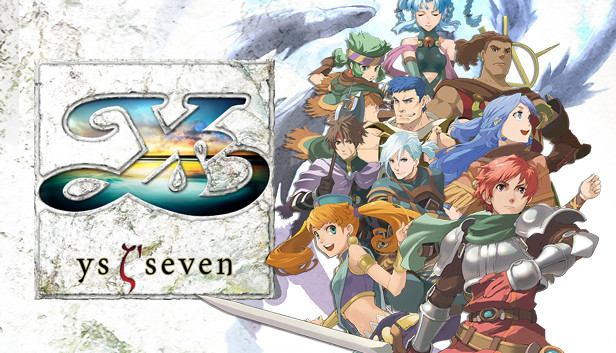
Ys Seven offers a great example of how a JRPG can enjoy the benefits of a dynamic set of party members while also preserving their core gameplay functionalities for the player. This is accomplished through the roles of Mustafa and Sigroon as temporary party members, serving as counterparts to the “main” characters Cruxie and Aisha, respectively.
These temporary party members are functionally identical to those that they “replace” (or are replaced by) throughout the narrative. This means that their particular battle styles and weapon skills are always accessible during the game, circumventing any gameplay-related issues that may have been caused due to their absence. This is particularly important for Ys Seven, as the game specifically emphasizes the use of “weapon type” advantages in its battle system, making it all the more essential that Aisha’s “Piercing” weapons and Mustafa’s “Striking” weapons are available to progress through the oftentimes challenging enemy encounters encountered in the game.
The additional freedom gained through using a character “stand-in” enables the game to construct story threads that are rarely seen in the genre. I will briefly touch on a few of them here.
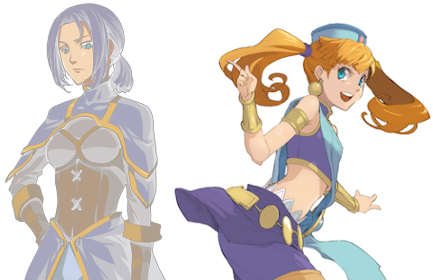
For example, Aisha is the crown princess of the Kingdom of Altago, and her character arc begins with what one expect from a typical JRPG - she sneaks off in order to adventure with Adol (the protagonist) and to acquaint herself with the land that she will eventually be sovereign over. However, partway through the story, Aisha is forced into her leadership role early due to her father’s alleged assassination by Adol and company. Rather than shirk these royal obligations and become a fugitive with the rest of the party (as one would expect from a typical JRPG), she decides to return to the palace, working behind the scenes to unravel her father’s true killer and clear Adol’s name.
In her place, she sends her trusted confidant and mentor, Dragon Knight Sigroon, to assist the party. Due to the catastrophic events unfolding in the land of Altago, including the King’s assassination, Sigroon is initially suspicious of Adol’s party. However, as the story progresses, she begins to trust the adventurers and aids them in their quests for the good of Altago. She eventually departs from the party after being gravely injured in the attack on the capital city, entrusting Aisha’s protection to Adol and company. In the meantime, having been exposed to the injustices that the people have suffered under the previous rule, Aisha has matured greatly in her absence from the main cast. She rejoins the party with newfound resolve to see the group’s mission through.
It goes without saying that Aisha and Sigroon’s character arcs, and their contribution to developing the Kingdom of Altago as a setting, would not have been possible had Aisha remained with the party throughout the game. From a narrative standpoint, the writers could have easily had Aisha become a fugitive with the rest of the party, which would not lead to any major plot holes or story inconsistencies. However, in allowing Aisha to assume her royal obligations, the writers succeed in delivering not one, but two satisfying character arcs in letting Sigroon replace her. And of course, this is accomplished without any impact to the player from a gameplay perspective.
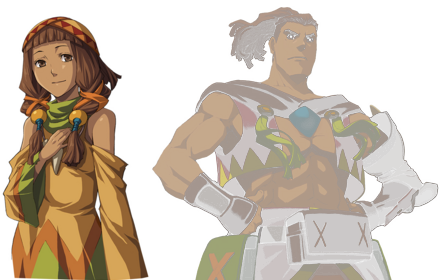
Mustafa’s and Cruxie’s character arcs play out in almost the inverse of Aisha’s and Sigroon’s. Mustafa is the current elder of Segram Village, where Adol and company pass through on their way to the Flame temple, one of the key story destinations of the game. He is initially wary of the outsiders who want to enter the village’s sacred place of worship, and joins the party to oversee them. Mustafa is presented as a reliable leader with a deep sense of responsibility for his people and his little sister Cruxie, who is bedridden with Iskan Fever - a mysterious illness sweeping through Altago.
Later in the game, and after the events at the Flame Sanctum, Adol allows Mustafa to use the Flame Dragon Stone, a key item that they just obtained from the temple, to cure his little sister Cruxie’s terminal illness. Having recovered her strength, Cruxie is eager to repay the kindness of those who looked after her, and do her part in saving Altago. Being a Segramite warrior herself, she joins Adol and company in place of Mustafa, despite his objections and worries for her safety. She notes that Mustafa, as the village elder, cannot leave the villagers for long, as they look to him as a leader and would perish without his guidance.
Rather than serving as a vehicle for more complex character development, Cruxie as Mustafa’s party member swap allows both characters to remain consistent with their ideals, and thus react to events more organically during the story as they occur. While Mustafa’s battle prowess is much appreciated for the party, he puts his village obligations first and remains behind to defend them from the ever-present threat of monster attacks, which have been growing more and more dire over the course of Ys Seven’s plot. Being given a second chance at life, Cruxie volunteers to carry on in Mustafa’s stead, wanting to repay Adol and his cohort. While Cruxie could have easily been made to stay behind in the village while Mustafa continues with Adol, this outcome would have run contrary to how they are characterized in the story.
In summary, the dynamic party membership present throughout Ys Seven’s narrative enables the progression of novel character arcs that are natural in the context of the story and otherwise consistent with their values. The use of temporary characters to enable this, while also giving such characters their own individual development, is an innovative decision that can be considered one of Ys Seven’s strongest achievements.
Fire Emblem Path of Radiance
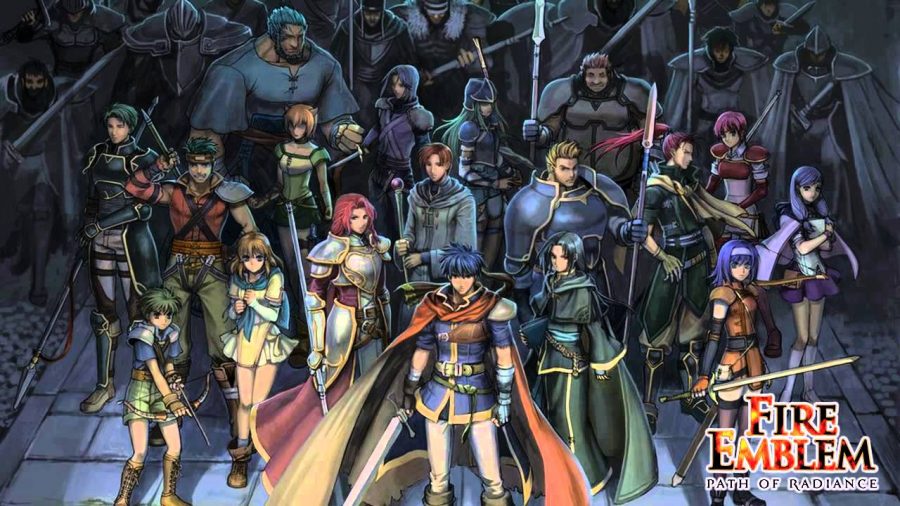
While there exists an argument for not including SRPGs in this discussion because they generally feature many more playable characters than a “traditional” JRPG, Fire Emblem Path of Radiance contains two neat examples of dynamic party composition that I thought warranted mention. In truth, Fire Emblem Radiant Dawn places a much larger emphasis on party availability driven by plot events, but breaking that down will likely constitute a post in and of itself. For these reasons, I’ll only discuss the former game below.
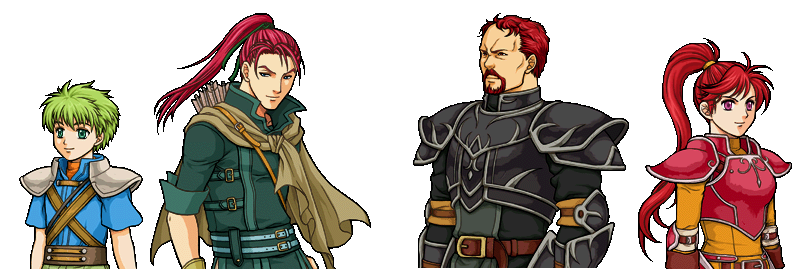
Shinon is one of the first playable units you are given in Path of Radiance, being a veteran member of the Greil mercenaries. He comes as a pre-promote that is incredibly powerful, outclassing many of the “trainees” in your group and conveying the breadth of his experience as a warrior. Due to Commander Greil’s untimely death and Ike’s inexperience running the mercenary outfit, Shinon ends up leaving the group to pursue other opportunities to elevate his status and fame.
Much later in the game, Ike’s army runs into Shinon again, now a mercenary for the Daein army (and thus, fighting for the opposing side). One may be surprised to learn that Shinon can actually be recruited back into Ike’s army by fulfilling a sequence of secret conditions. It is hinted throughout the game that Shinon took an apprentice during his time in the Greil mercenaries, whom he trained in archery. If one first speaks to Shinon using Rolf, and then subsequently depletes Shionon’s HP with Ike, he will be recruited into your army. It is revealed that Rolf was indeed the apprentice, and that Shinon’s compassion for seeing the boy grow into an archer, and Ike’s strong leadership, were the driving force behind Shinon again rejoining the Greil mercenaries.
I think that Shinon’s story provides another example of unique character development that was facilitated by his departure from the main party. Being an esteemed veteran fighter with no deep ties with the outfit, it makes sense that Shinon does not continue to fight with the severely weakened outfit. It is only when he stands on the side opposite to the protagonists, and when Ike subsequently bests him in battle, does Shinon recognize that they are worthy of his talents. In addition, Shinon’s compassion for Rolf also allows him to see the value in having comrades to fight alongside after having spent most of his life as a lone wolf. It is appropriate that both Ike and Rolf are thus involved in Shionon’s re-recruitment.
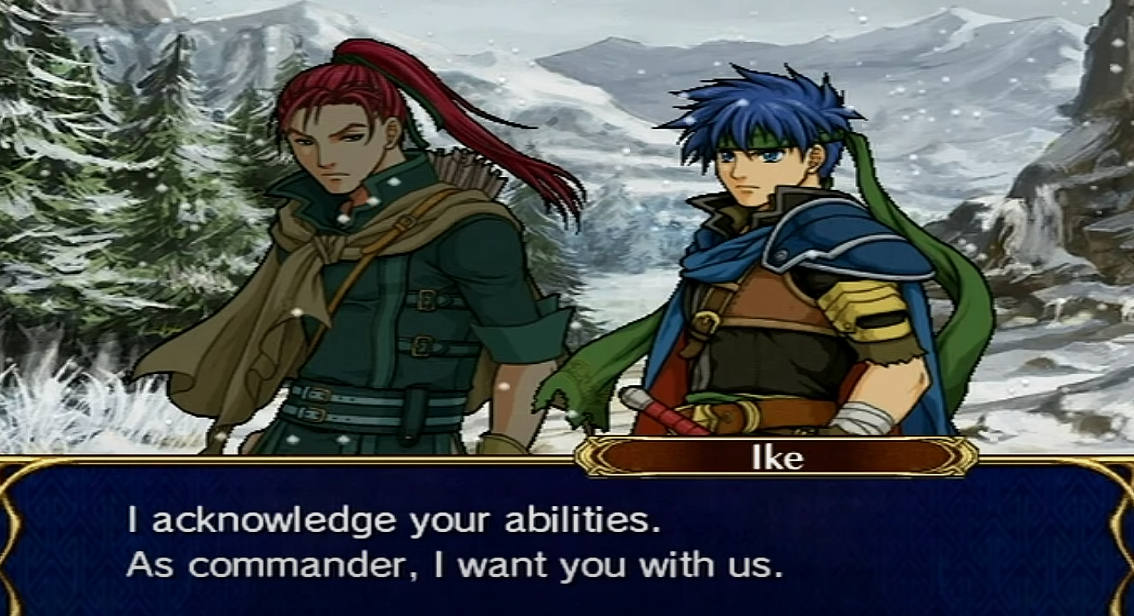
In the same vein, Jill’s potential defection from Ike’s army also serves as an interesting example of the impact of losing party members. Being a Daein soldier, Jill is forced to join Ike’s party due to political circumstances despite fighting for the opposing flag. However, over the course of the game she begins to realize the misdeeds perpetuated by Daein and grows attached to the mercenary group, who are fighting to retake their country and overcome prejudice against the Laguz.
While this in and of itself would not constitute what we have called a “dynamic” role in the party, as she remains with the group through the game, there is a secret event that may force Jill to defect from the group. If she speaks to her father, who is the Daein commander encountered during Chapter 20: Defending Talrega, she will choose to rejoin the enemy team. However, this can be avoided if Jill has an A support with Mist, where she will instead tell her father that she has rediscovered why she fights: to protect the Crimean Army and her dear friends.
This entirely optional event presents a high stakes situation that challenges Jill’s loyalty to Ike’s army and the extent of her growth from the extremist Daein soldier that she once was. While it can be easily avoided through benching Jill for the chapter, even the spectre of her betrayal demonstrates the narrative merits of deviating from more traditional storytelling, where Jill’s loyalty would have been a given.
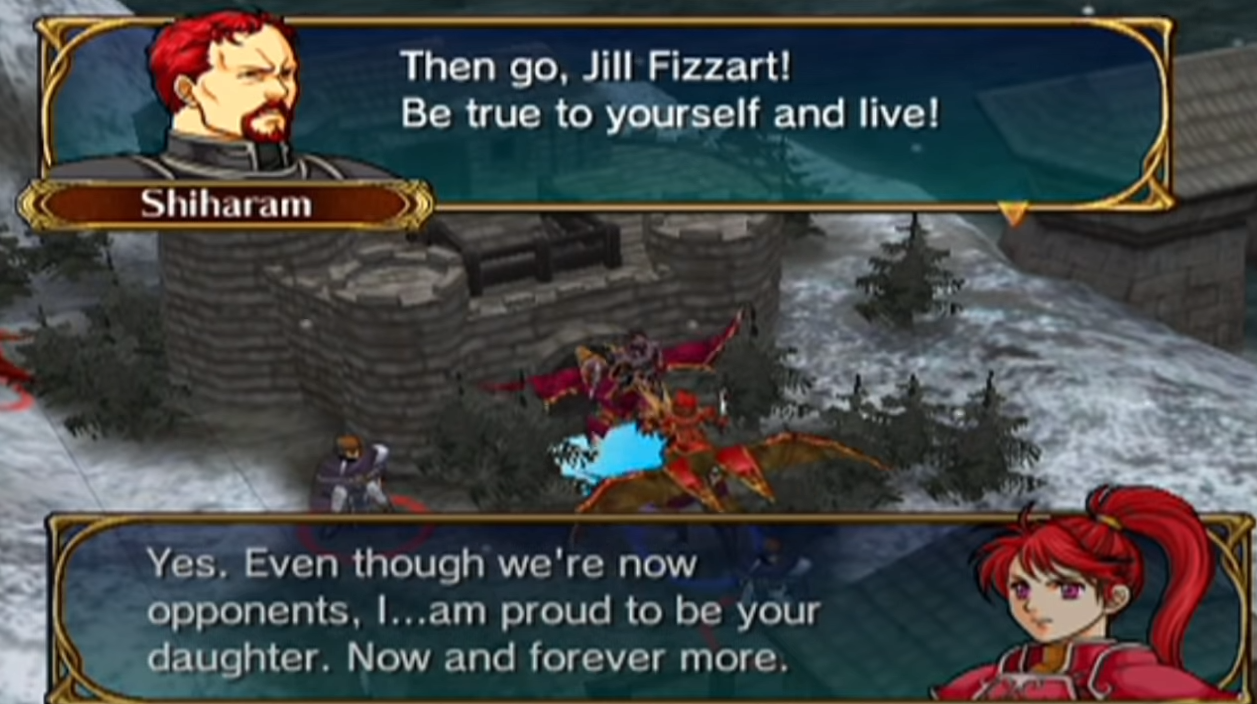
In light of the achievements of the games discussed above in the way of using a dynamic party to enhance the experience, I wanted to quickly give an example of how the opposite effect can also be obtained if done poorly.
Tales of Vesperia
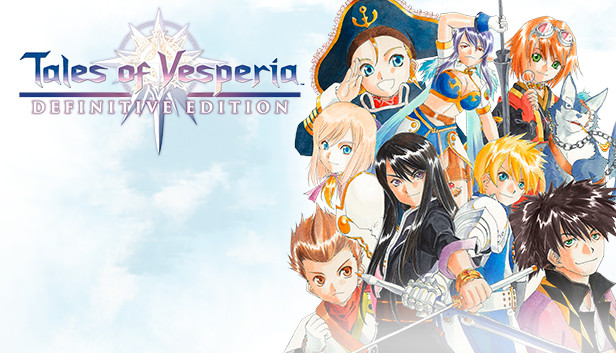
Tales of Vesperia is often touted as one of the primer games in the long-running series, rivaling heavy-hitters such as Tales of Symphonia and Tales of Abyss in terms of popularity and acclaim in the fandom. While I have my own share of issues with the game that put me squarely outside of that camp, I’ll resist the urge to expound on them here and instead stay on topic.
The game takes a “spray-and-pray” approach to party membership, taking many different approaches to shake-up your roster at any given time in the story. Unfortunately Tales of Vesperia misses the bullseye for nearly every shot that it takes. To keep things brief, I’ll mention two examples below.
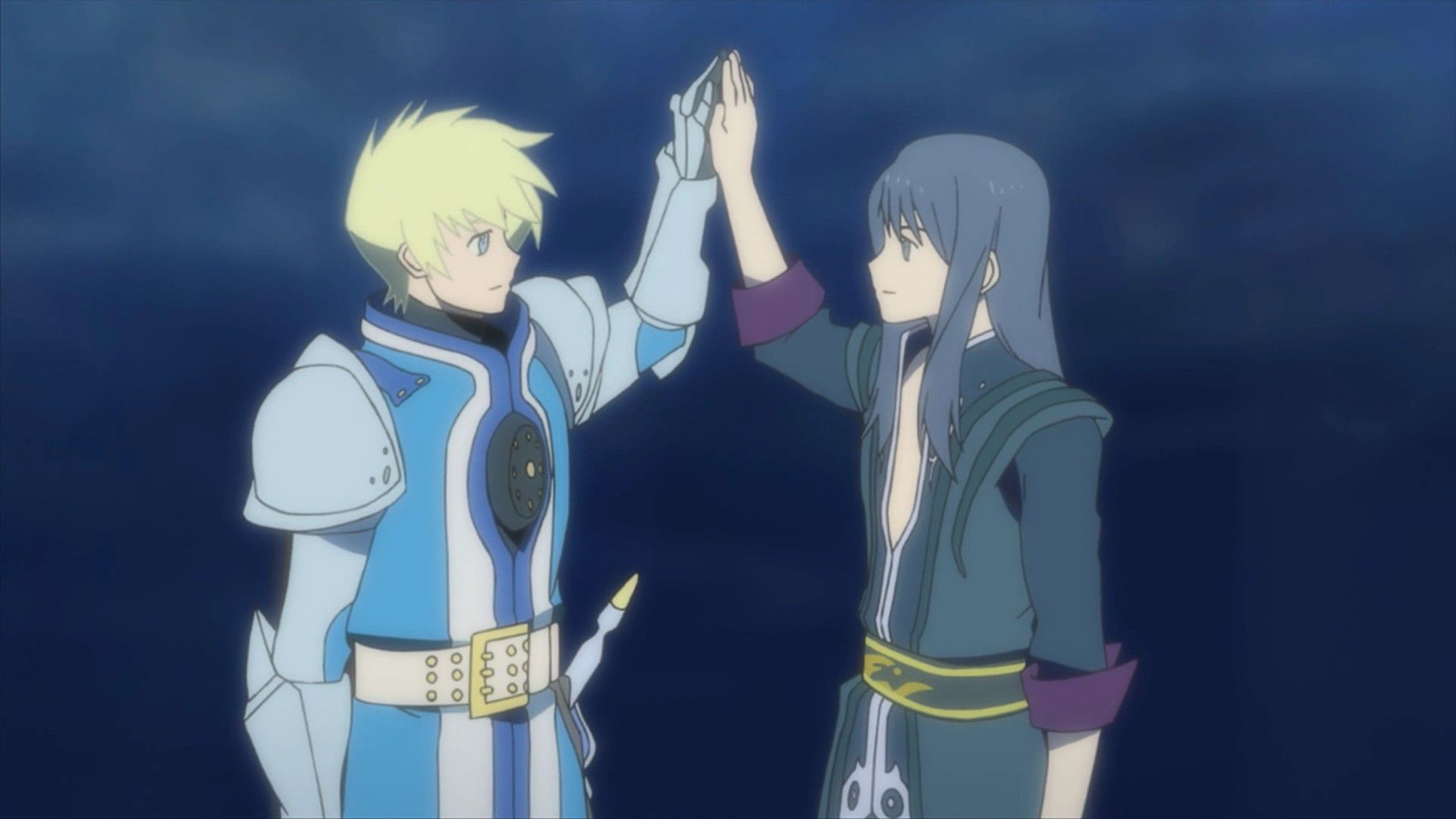
Take Flynn for example, a member of the imperial knights who acts as a foil to the main protagonist, Yuri, who is a former knight himself. Throughout the course of the game, Flynn acts as a guest character who joins you periodically when your party’s objectives align with those of the knights. At first blush, this sounds reasonable and consistent with his loyalties, despite the fact that his lack of availability makes it difficult to use the character during gameplay.
The main issues arise from Flynn’s lack of relevance when not in the party. He receives little character development while off-screen, and his plights as a commander in the knight company do not yield any meaningful consequences or otherwise help develop the story. Thus, it appears that Flynn’s distinction from the party feels more “for the sake of” rather than to accomplish anything worthwhile. Put another way, the player suffers the gameplay-related drawbacks of Flynn’s absence without any of the narrative benefits.
The game’s development history helps to shed some light on this questionable choice. Apparently, Flynn was a non-playable secondary character in the original release and later made playable due to fan popularity. This helps to explain his lack of relevance throughout the game.
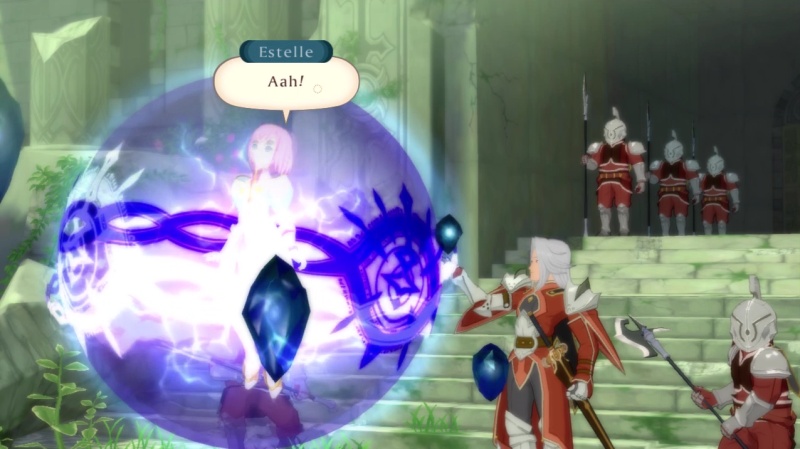
Ready for another forced kidnapping plot device? These offer what I would consider the worst examples of dynamic party membership that you can include into your JRPG. I’ll use Estelle’s kidnapping event in Tales of Vesperia as an example.
Being a “Child of the Full Moon”, or in more base terms, a “Chosen One” trope, Estelle is kidnapped by the main antagonist in order to use her special abilities for nefarious purposes. In response, the party goes on a crusade to rescue her, cumulating in a forced boss fight with a brain-washed “Estelle”. After duking it out, Estelle hits the undo button to get rid of the mind-control with copious amounts of yelling, and reunites with the main characters.

As you may be able to tell, I’m not a fan of these types of plot devices. Rather than using the freedom of a dynamic party to enable and empower the main characters to fulfill their goals, it is instead used as a means to deprive them of their agency. It feels especially cheap when the kidnapping only occurs by virtue of a gimmicky “chosen one” archetype. What other purpose does Estelle’s inherent power have over the course of the game except to facilitate the kidnapping plot device? The writers use this event as the main catalyst to her later character development (i.e. “I’ll live for myself rather than being used as a tool”), but the reliance on such crutches just makes that development feel unearned. It goes without saying that this kidnapping plotline detracts from BOTH the plot and gameplay experience. Did I mention that Estelle is also your primary healer?
As I mentioned at the start of this post, there exist many creative ways that JRPGs can shake up their character rosters to advance the writers’ visions without detriment to the core gameplay. Of course, the few that we covered here are only a small sampling of this, and I hope to revisit the concept in future posts as I come across other illuminating examples. Thanks for reading.
December 24th, 2021 by 1regretbeetle